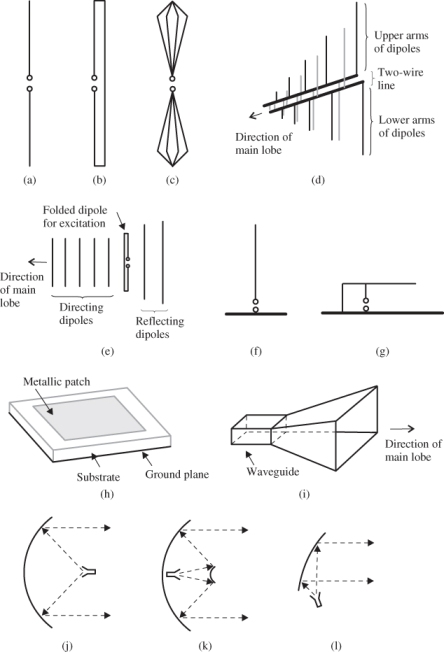7.2 Standard Types of Antennas
Antennas come in a variety of shapes and sizes since technical requirements and frequencies of operation can be very different in various applications. Electrical requirements concern antenna parameters like large bandwidth, high gain, or a certain radiation pattern with a predefined direction of the main lobe and predefined directions of nulls. Furthermore, additional requirements come into play like reduced size, low weight, low cost or predetermined manufacturing process. Figure 7.7 shows an incomplete overview of some commonly used antenna types that represent—in one way or another—good solutions in practical antenna applications.
Figure 7.7 Common types of antennas: (a) dipole, (b) folded dipole, (c) biconical antenna, (d) logarithmic periodic dipole antenna (LPDA), (e) Yagi-Uda antenna, (f) monopole, (g) Inverted-F antenna, (h) patch antenna, (i) horn antenna, (j) parabolic dish antenna, (k) parabolic antenna with subreflector (Cassegrain) and (l) parabolic antenna with offset-feed.

A dipole antenna (see Figure 7.7a) is a basic antenna type that simply consists of two metallic rods. The antenna is fed at the centrepoint between the rods and shows an omnidirectional radiation pattern in lateral direction. (No radiation occurs in the direction of the axis of the rods.) If the overall length of the dipole is about half a wavelength the antenna ...
Get RF and Microwave Engineering: Fundamentals of Wireless Communications now with the O’Reilly learning platform.
O’Reilly members experience books, live events, courses curated by job role, and more from O’Reilly and nearly 200 top publishers.

